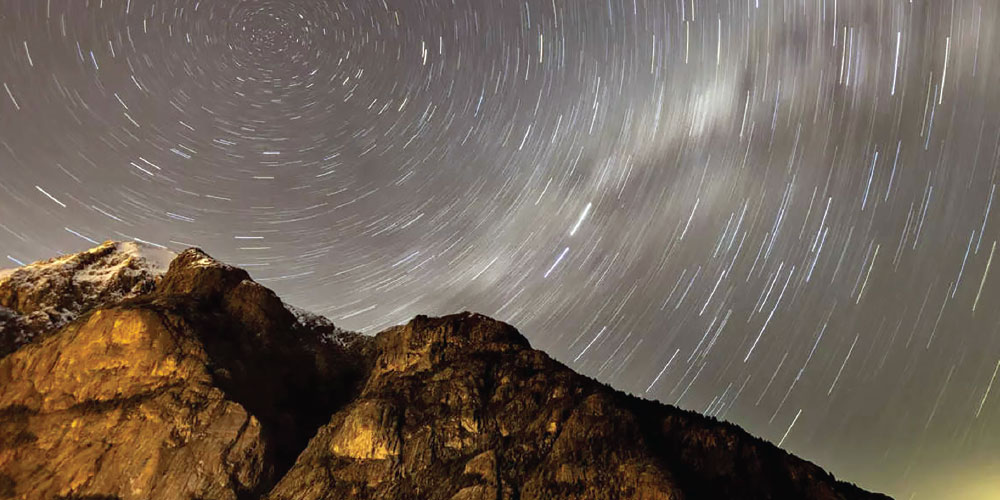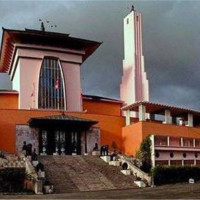- Friday, 26 December 2025
October Astronomical Occasions
The night skies of this month would proudly present planets pleasantly along with scintillating stars and charismatic constellations that bejewel the heavens. Elusive planet Mercury would be lost in solar glare, as it would be hurrying hastily across the sky during daytime through the constellations Virgo (maiden) and Libra (scales). Spellbinding star Spica (Chitra) would be glistening in Virgo from basically 250 light-years distance. Zubenelgenubi (southern claw) or Vishaka has been mysteriously multiple stars. Flaming green-tinged star Zubeneschamali has been the charmingly corresponding northern claw.
They are simply 75 and 160 light-years away and nesting nicely in constellation Libra. Planet Venus could be glanced at after sunset in the western sky for a terse time with the stars of Virgo and Scorpius (scorpion). It would be dipping slowly towards the southern horizon. Star Antares in Scorpius would be shining superbly below Venus. With little imagination, one could surmise Scorpius’ stars were tracing the shape of a scorpion. The resplendent ruby red supergiant star Antares (Jestha) would dominate as Scorpion’s heart. It would be reportedly reaching its final stage of life. It would be 550 light-years away. If enormous Antares would substitute our sun, its surface would extend eccentrically beyond the trail of Mars and into the asteroid belt.
The ruddy planet Mars could be marvelled at in the eastern sky. It would be rising late at night in the eastern sky and fade away by sunrise. It would be marching through the comely constellation Gemini (twins). Stars Castor (Kasturi) and Pollux (Punarbasu) would be coruscating above Mars. The massive planet Jupiter and remotely glowing planet Uranus could be admired in the eastern sky after sunset. They would be ascending high in the southern sky during the wee hours of the night and be evanescent in the western sky at daybreak. They would be mingling with the stars dwelling in the constellation Taurus (bull). Amazing star Aldebaran (Rohini) would be dazzling below Jupiter and Uranus, which would be gleaming to the west of Jupiter. The ringed planet Saturn and blue-hued planet Neptune would be beaming in the eastern sky after sundown.
They would be scaling the southern sky and then sliding towards the western horizon by daybreak. Saturn would be skylarking with stars that sketch the eastern section of the constellation Aquarius (water bearer). Neptune would be resting below the curious circlet asterism that belongs to the constellation Pisces (fish). It could be cherished north-east of Saturn.
The new moon would befall on October 2, while the full moon would betide on October 17. On New Moon’s Day, an arcane annular solar eclipse would occur when the moon would be too far away from the earth to completely cover the sun. Consequently, a ring of light around the darkened moon could be perceived.
The eclipse path would start in the Pacific Ocean off the coast of South America and scurry across parts of southern Chile and Argentina. It would not be observable to us. One should never attempt to peer at an object close to the sun through binoculars or telescopes. By doing so, one may suffer with permanent blindness. This full moon has been popularly known as the hunters’ full moon because during this time of year the leaves would be falling and the game would be fat and frolic.
The full moon could be marked as the second of three supermoons for 2024. This moon would be very near earth and look slightly larger and luminous than usual. Venerated Bijaya Dashami would be joyfully celebrated on 12 October. Laxmi Puja festival would be celebrated respectfully on October 31.
The minor Draconid meteor shower would be exhibiting meagre ten meteors per hour during its maximum on the night of 07/08 October. The meteors are putatively produced from the remains of dusty dregs left behind by comet 21P/Giacobini-Zinner, which was identified in 1900 by French astronomer Michael Giacobini and recognised by German astronomer Ernst Zinner in 1913.
This petit comet would measure just two kilometres in diameter and would hurtle around the Sun in mere 6.6 years. Draconids would be active annually from 06 to 10 October. The second quarter moon would perhaps ensure dark skies in the evening for the shower to offer a good show with shooting stars from tenebrous locations away from the city.
Watching Draconids would be favourable this year even though the moon would be sparsely 27 percent effulgent during the time of the utmost shower; it would set early, allowing for a night of meteor chasing in the moonless sky. Meteors would spring out from the radiant nestled in the neighbourhood of the hypothec head of a dragon consisting of giant star Eltanin and binary Rastaban, which would depict the dragon's eerie eyes. They are barely 154 and 380 light-years away. The circumpolar constellation Draco (dragon) would be snaking through the northwestern sky.
An average Orionid meteor shower would be displaying up to 20 meters per hour in the north-eastern sky during its peak from the night of 21 October till the morning of 22 October. Orionids allegedly originate particles from iconic comet 1P/Halley, which has been followed since ancient times. The shower would run generally from 02 October to 07 November.
The waning bright gibbous moon could block out most of the fainter meteors this year, but patient meteor-lovers should still be able to relish a few fulgent ones. Best viewing would be ascertained after midnight.
Meteors would emanate from its radiant point, residing in the vicinity of the upraised arm of the hunter holding his club and standing in the northeastern sector of the confounding constellation Orion.
The comet has been named not after its discoverer but after renowned English astronomer Edmund Halley, who calculated its cloaked circuit. Halley’s Comet had visited us in 1986 and would return in 2061.
Meteors arise whenever pieces of comet debris collide with the earth's atmosphere, typically disintegrating circa 70 to 100 kilometres above earth.
Asteroid 39 Laetitia would be well placed for pondering and delightful observation on 7 October during its opposition to the Sun in the bizarrely broad and cutely compelling constellation Cetus (whale), which would be unfurling uniquely with the mystifying variable star Mira below the constellation Pisces. It would drift to its loftiest realm in the southern sky around midnight. It would become accessible after dusk when it would elevate above the eastern horizon. It would then sink towards the western horizon. At around the same time that Laetitia would be at opposition, it would make its immediate approach to earth (termed perigee) and would appear lambent. The earth and the sun would lie in one straight line, with the earth in the middle and on the same side of the sun as Laetitia. Nonetheless, Laetitia would be wandering like a simmering speck of light.
The SpaceX Polaris Dawn mission made history when its crew conducted the first spacewalk by non-government astronauts and splashed down off the coast of Florida. The four-member team launched from the Kennedy Space Centre, quickly journeying deeper into the cosmos than any person in the past half century as they ventured into the dangerous Van Allen radiation belt. They sailed to an astounding altitude of 1400 kilometres that was more than three times higher than the International Space Station (ISS) and became the first people that had ever travelled from earth furthest since the Apollo missions to our moon.
With their Dragon spacecraft's trajectory brought to utter 700 kilometres, one astronaut swung open the hatch and climbed out into the void, gripping the salient structure designated Skywalker as a breathtaking sight of earth unfolded before him.
He went back inside, and in an in a few minutes he was replaced by the second astronaut, who performed many mobility tests on SpaceX's sleek, next-generation suits. Since Dragon is bereft of an airlock, the entire crew was exposed to the vacuum of space. Other astronauts had been strapped in throughout as they monitored vital support systems.
It indicated an ambitious leap forward for the commercial space industry along with another triumphant achievement for SpaceX. Though the pioneering private company was only founded in 2002, it has outpaced its legacy competitors with its asset of vast fortune and unrelenting zeal to dispatch humans to planet Mars successfully in the foreseeable future.
(Dr. Shah is an academician at NAST and patron of NASO.)

















